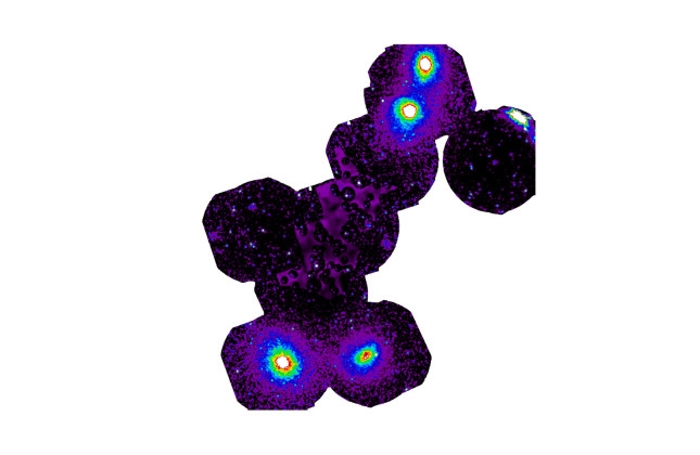
Astronomers analyse huge, hot filament of missing normal matter
A European team of astronomers, led by Leiden-based researcher Konstantinos Migkas, has uncovered a large filament — a long, thread-like structure — of hot gas connecting four clusters of galaxies. This filament is made up of what scientists call the warm-hot intergalactic medium.
The hot gas stretches across a distance of 23 million light years, reaches temperatures above ten million degrees, and may be part of the missing normal matter in the universe. The team used two X-ray space telescopes for their observations: Japan’s Suzaku and Europe’s XMM-Newton. Their findings have been published in the journal Astronomy and Astrophysics.
Although hot gas in filaments has been observed before, this is the first time its properties have been measured through precise spectroscopic analysis — without significant interference from black holes or galaxies.

Early observations did not match the simulations.
Previously, astronomers tried to ‘stack’ observations of entire collections of filaments in an effort to avoid contamination from black holes. However, these stacked observations didn’t match the predictions of the standard cosmological model.
‘We didn’t expect our new method to reveal the signal of the missing baryons so clearly,’ says lead researcher Konstantinos Migkas, a postdoctoral fellow at Leiden Observatory and SRON (the Netherlands Institute for Space Research). ‘Our results show that the properties of cosmic filaments do match the simulations after all. The cosmological models were right all along. That’s a great reward.’
According to Migkas and his team — which includes researchers from the University of Bonn (Germany), the University of Helsinki (Finland), and the University of Paris-Saclay (France) — this study could pave the way for future research focused on identifying filaments and their properties in similar regions of the universe. This would help scientists gain a better understanding of how the largest structures in the cosmos are connected.
Read more
You can read the article in Astronomy and Astrophysics here:
